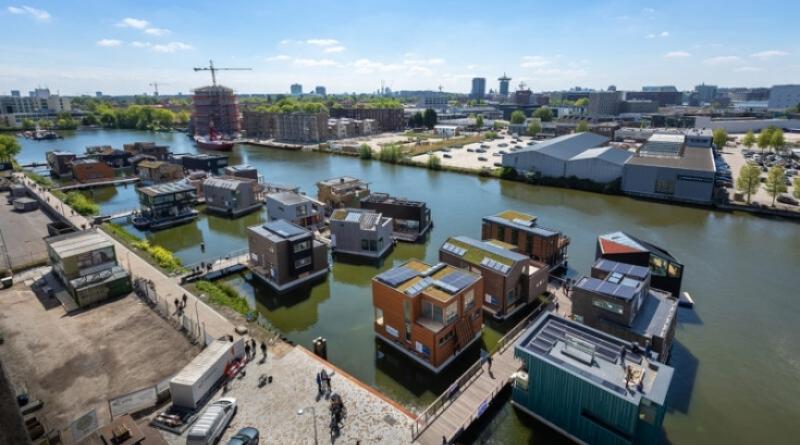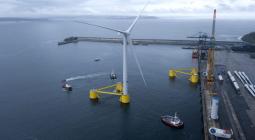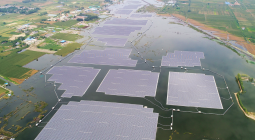Floating solar housing estate with intelligent energy management.

The energy supply for the buildings of a floating solar settlement in Amsterdam is based on a joint energy management system. This enables the entire neighbourhood to act as one integrated system.
Researchers at the Fraunhofer Institute for Industrial Mathematics (ITWM) have developed a new energy management system. This allows photovoltaic systems, battery storage systems, heat pumps and electric vehicles to be linked together. This makes it possible to supply individual households or entire energy districts with their own regenerative energy as far as possible, even in the face of the variability in current caused by the fluctuating generation of electricity by solar systems.
Energy management for the entire community
The basis is a common energy management system, as it is already used in many individual buildings. "We have developed this into an energy management system for entire energy communities," says Matthias Klein, describing the approach. He led the development project at the Fraunhofer ITWM. It has a modular structure and can therefore be adapted to the local conditions, depending on which components are installed and how many buildings are networked with each other. The energy management system analyses at any time where the energy should and should not go.
Several projects with the new energy management system have already been implemented. For example, the buildings of a floating solar housing estate on a canal in Amsterdam were connected to each other via a smart grid. The buildings have solar panels on the roof. These supply the entire settlement with electricity via this grid - both for the electrical consumers in the households and for the pumps for heating. In addition, a storage battery is installed in each building. Charging points for electric cars are also installed.
Weather forecast improves storage efficiency
The new energy management is the brain of the neighbourhood grid. For example, the photovoltaic systems, heat pumps and energy storage units installed in the individual houses in the Amsterdam Quarter function like a single large system.
Speaking of floating in the Netherlands:
Floating solar is picking up speed.
As a result, not only does this increase the district's self-consumption, but what is more, the solar systems do not have to be regulated if the sun is too strong, as is usually required by the regulations in the Netherlands. An additional forecasting model also improves the efficiency of the electricity storage system by comparing the expected solar radiation with the heat consumption, thus sending electricity either to the heat pumps or to the batteries. It can also optimise the timing of electricity storage. (su/mfo)
24 January 2020
pv Europe





